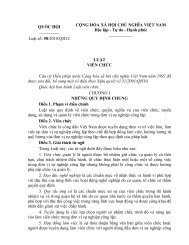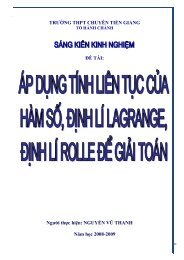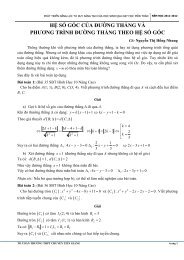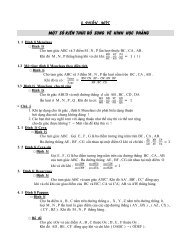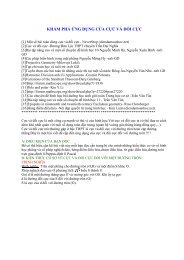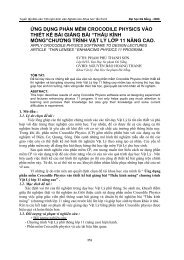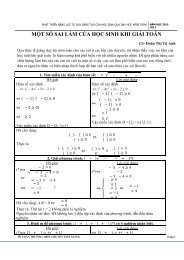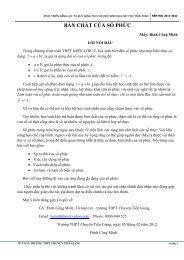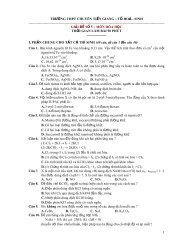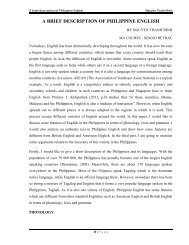103 Trigonometry Problems
103 Trigonometry Problems
103 Trigonometry Problems
You also want an ePaper? Increase the reach of your titles
YUMPU automatically turns print PDFs into web optimized ePapers that Google loves.
4. Solutions to Introductory <strong>Problems</strong> 113<br />
But we have not shown that indeed, cos α sin β can obtain all values in the<br />
interval [ − 1 2 , 1 2]<br />
. To do this, we consider<br />
(cos α sin β) 2 = (1 − sin 2 α)(1 − cos 2 β)<br />
= 1 − (sin 2 α + cos 2 β) + sin 2 α cos 2 β<br />
= 5 4 − (sin2 α + cos 2 β)<br />
= 5 4 − (sin α + cos β)2 + 2 sin α cos β<br />
= 1 4 − (sin α + cos β)2 .<br />
Let x = sin α and y = cos β. Then −1 ≤ x,y,≤ 1 and xy =−2 1 . Consider<br />
the range of the sum s = sin α + cos β = x + y.Ifxy =−2 1 and x + y = s,<br />
then x and y are the roots of the quadratic equation<br />
Thus, {x,y} =<br />
s+ √ s 2 +2<br />
u 2 − su − 1 2 = 0.<br />
(∗)<br />
{ √ }<br />
s+ s 2 +2<br />
2<br />
, s−√ s 2 +2<br />
2<br />
. By checking the boundary condition<br />
2<br />
≤ 1, we obtain s ≤<br />
2 1 . By checking similar boundary conditions, we<br />
conclude that the equation (∗) has a pair of solutions x and y with −1 ≤ x,y ≤<br />
1 for all −<br />
2 1 ≤ s ≤ 2 1 . Because both the sine and cosine functions are surjective<br />
functions [ from R to the interval [−1, 1], the range of s = sin α + cos β is<br />
−<br />
1<br />
2<br />
,<br />
2<br />
1 ]<br />
for sin α cos β =−<br />
1<br />
2<br />
. Thus, the range of s 2 is [ 0,<br />
2<br />
1 ]<br />
. Thus the range<br />
of (cos α sin β) 2 is [ 0, 4] 1 [<br />
, and so the range of cos α sin β is −<br />
1<br />
2<br />
, 2] 1 .<br />
45. Let a,b,c be real numbers. Prove that<br />
(ab + bc + ca − 1) 2 ≤ (a 2 + 1)(b 2 + 1)(c 2 + 1).<br />
Solution: Let a = tan x, b = tan y, c = tan z with − π 2 < x,y,z < π 2 .<br />
Then a 2 + 1 = sec 2 x, b 2 + 1 = sec 2 y, and c 2 + 1 = sec 2 z. Multiplying by<br />
cos 2 x cos 2 y cos 2 z on both sides of the desired inequality gives<br />
Note that<br />
[(ab + bc + ca − 1) cos x cos y cos z] 2 ≤ 1.<br />
(ab + bc) cos x cos y cos z = sin x sin y cos z + sin y sin z cos x<br />
= sin y sin(x + z)





